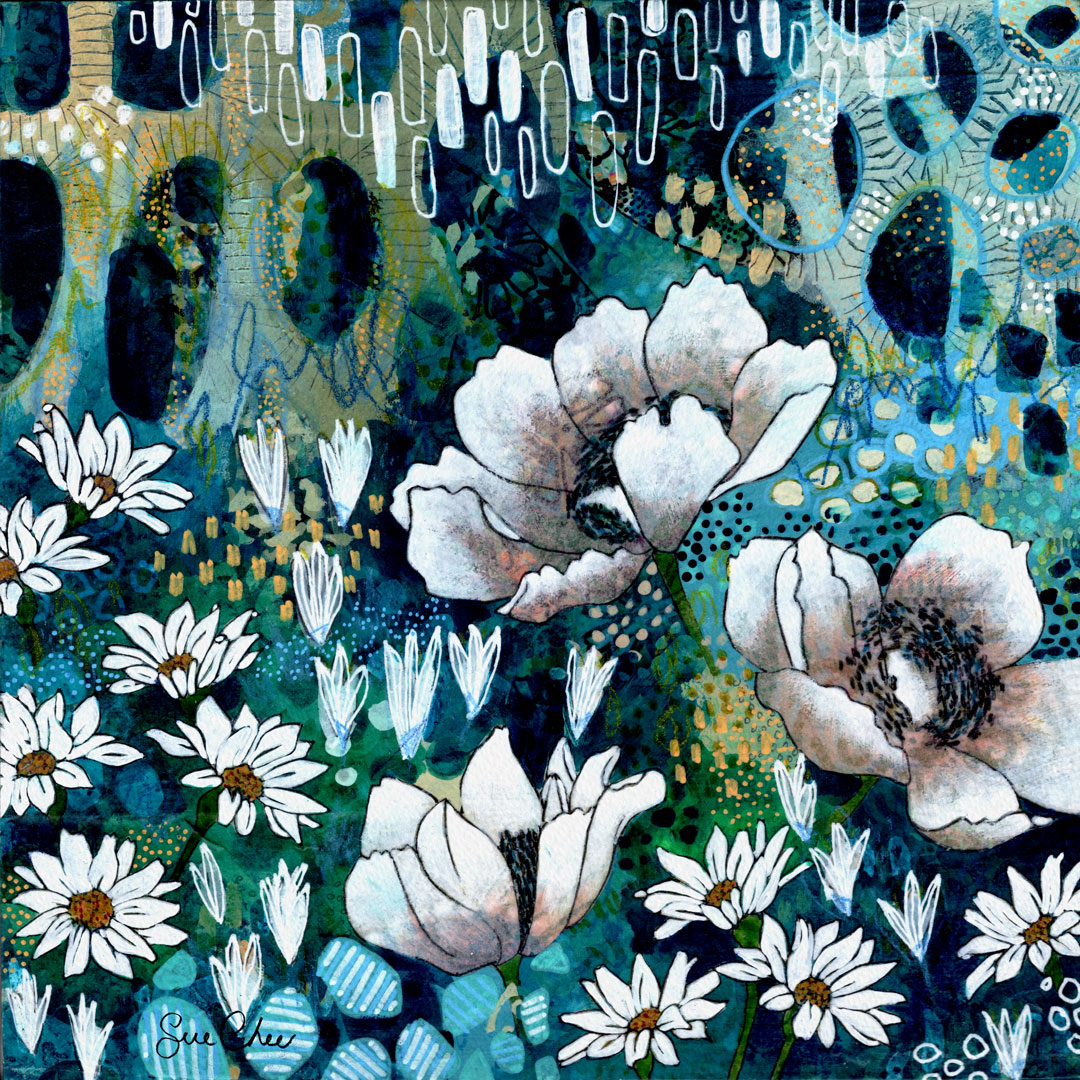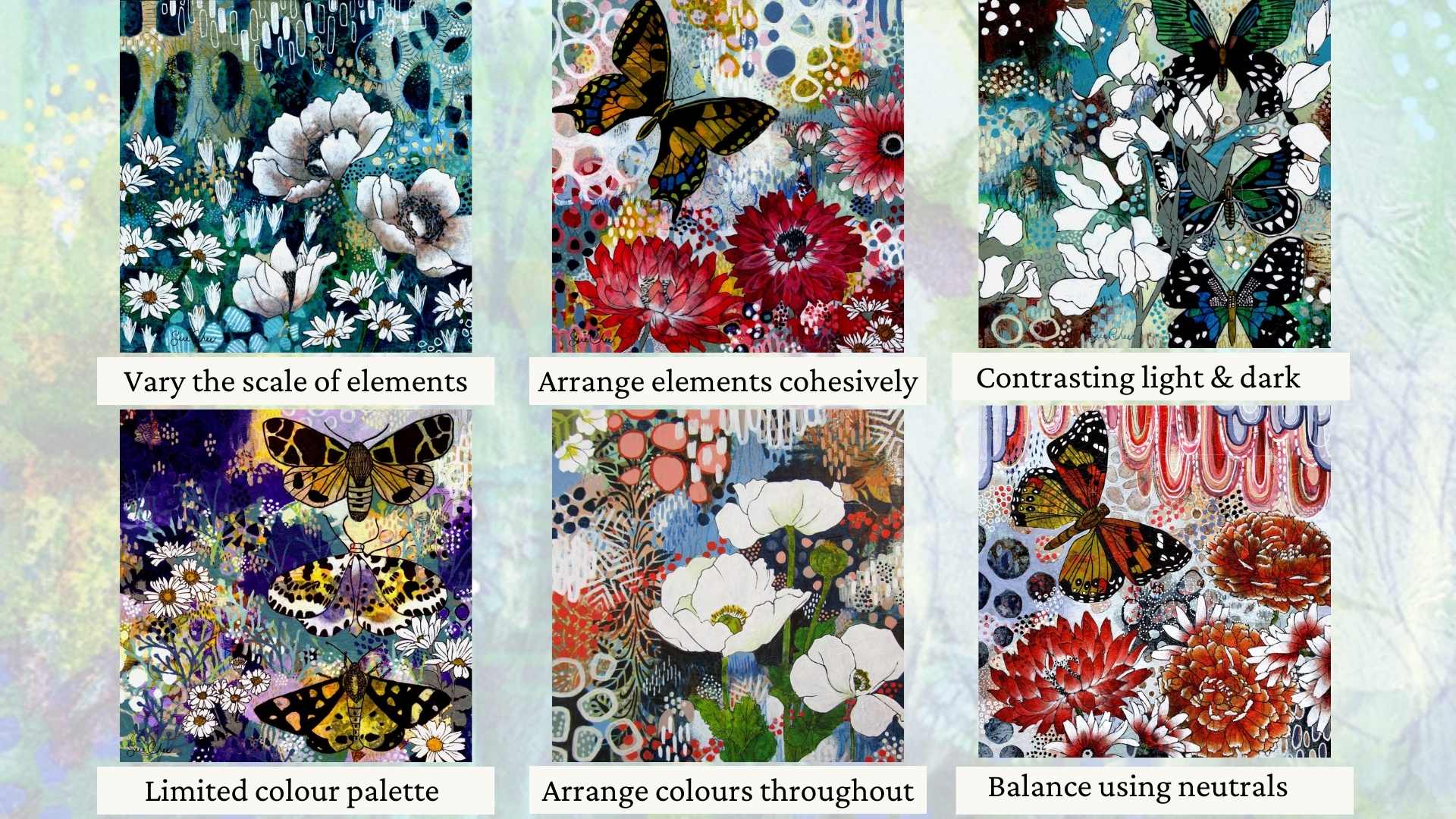
Six tips to create your own maximalist painting
I love to create maximalist paintings and I don’t like having too many quiet areas in my paintings. But that brings challenges. How do you create a maximalist painting while still maintaining cohesion? How do you create a painting that is not chaotic and overwhelming? These are the concepts I keep in mind when creating my flower paintings.

- Vary the scale of elements. Ensure that the elements in your painting vary in size. In my flower paintings I often include some large dominant flowers, which are the focal point. Then I include a different type of flower (often daisies because I love these) that is a medium size. And finally I make small abstract marks that loosely represent small or distant flowers.
- Arrange elements cohesively. There needs to be variation in the arrangement of elements throughout the painting, and this needs to be cohesive and make sense. When I create a painting, I densely group the elements in some areas and create more space around elements in other areas. The space creates quieter areas in the where your eye has a chance to rest. These areas can still have a lot of detail but the detail is in similar colours and tone to the elements already in that area.
- Have contrasting areas of light and dark. Contrast is one of the most important aspects of design within a painting because your eye travels to the areas of greatest contrast. So, to move your eye around all areas of your painting, you must include light-light areas and dark-dark areas.
- Harmonise your colours using a limited colour palette. Start with a limited colour palette of three to five colours. To ensure harmony between these colours, mix a ‘mother colour’ - a mud colour that is a combination of all the colours from your colour palette. Each time you use a colour or mix a new colour, add a little bit of the ‘mother colour’. I often also harmonise colours simply by not washing my brush between colours.
- Arrange colours throughout your painting. When you add a new colour to one area of your painting, ensure that you also add it to other parts to achieve colour balance.
- Balance your colours using neutrals. Saturated colour will look better against desaturated colour, so it’s important to have a balance of both in your paintings. I love using chromatic neutrals within my paintings. These are achieved by mixing varying degrees of the primary colours, which will give you mud, and adding white to create soft greys and tans.
